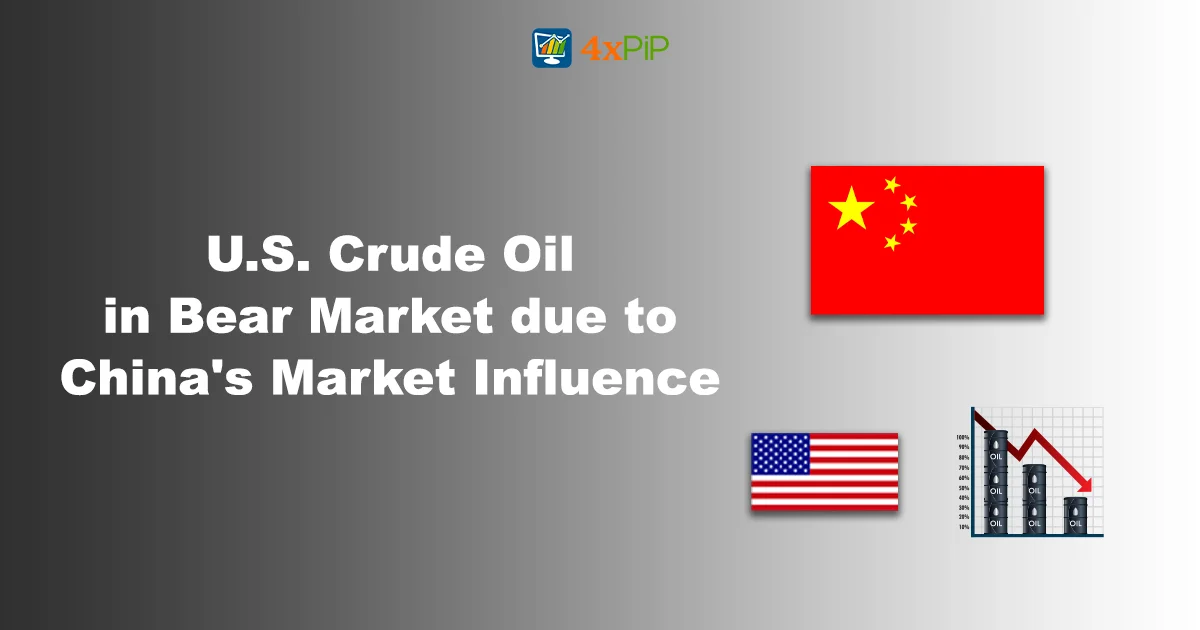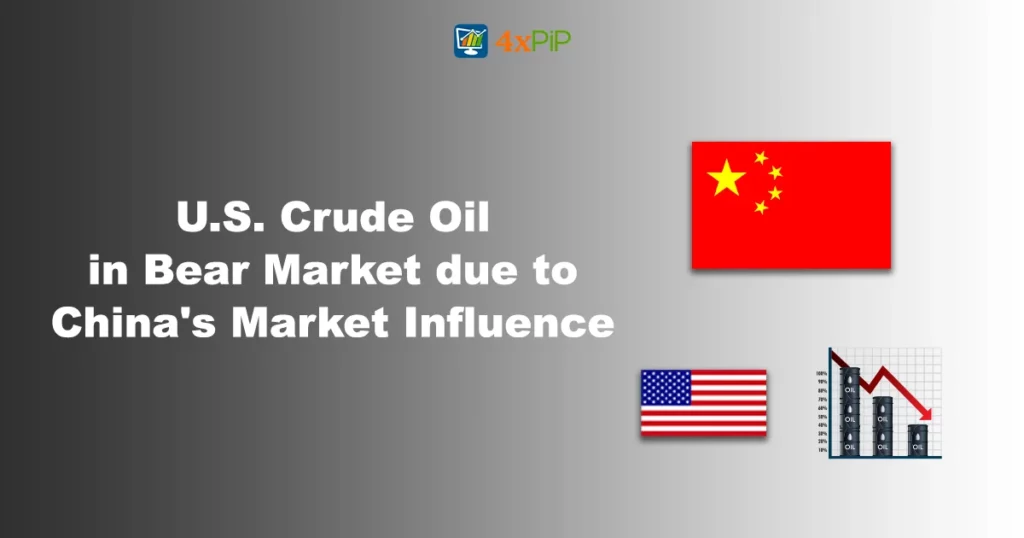As the global economy shifts, the U.S. crude oil market is bearish, with prices down 22% from September highs. Additionally, in this blog, we explore factors contributing to the downturn, focusing on China’s market dynamics. Moreover, at 4xPip, a trusted resource for trading tools, we provide insights into the oil market’s complexities. Furthermore, we empower traders with valuable knowledge. For guidance and support, email [email protected].
Speculation and Hedge Funds:
The recent drop in U.S. crude oil prices sparks debates in the trading community about speculation and hedge funds’ role. Additionally, the West Texas Intermediate (WTI) contract for December saw a sharp 5% sell-off, closing at $72.90 per barrel in a day. Analysts, such as Leo Mariani of Roth MKM, see it as a “dead cat bounce after speculators liquidated.” Moreover, Phil Flynn, an oil market analyst at Price Futures Group, points to significant hedge fund short positions influencing the market downward. In this analysis, the interplay between speculation and market fundamentals is a key factor in the bearish scenario.
Supply and Demand Concerns:
Amidst the speculation-driven market turbulence, a closer examination reveals deeper concerns related to supply and demand dynamics. U.S. crude oil inventories witnessed a notable rise of 3.6 million barrels last week, coinciding with the country’s output reaching a record 13.2 million barrels per day, according to the Energy Information Agency.
The surge in supply raises concerns of a demand slowdown, especially in the U.S. and China, the world’s top economies. U.S. industrial production and manufacturing saw a slight October decline due to an auto workers’ strike, fueling worries about an economic downturn. As we examine the delicate balance of supply and demand, it’s evident that these factors significantly impact U.S. crude oil prices.
China’s Impact:
China’s economic dynamics wield a significant influence on the recent bear market in U.S. crude oil, shaping the narrative of falling prices. The economic indicators from China provide a nuanced understanding of how its internal challenges reverberate across the global oil market.
Softening Domestic Demand:
China’s exports fell for the sixth consecutive month in October.
Refining throughput in the country slowed by 2.8%, indicating a potential weakening of domestic demand.
Global Ripple Effects:
The weakened economic data from China is sending ripples through the global oil market, contributing to concerns about continued downward pressure on oil prices.
Market Troubles from China:
Until more positive economic data emerges from China, market analysts anticipate sustained challenges and lower price points.
Second-Largest Economy Worries:
China’s economic challenges are particularly troubling for the market, given its status as the world’s second-largest economy.
Geopolitical Factors:
Middle East Conflict Impact: Amid the Israel-Hamas conflict, U.S. crude oil unexpectedly drops, currently $9 lower than the conflict’s onset, suggesting reduced geopolitical fear.
Risk of Attacks on Persian Gulf Infrastructure: Ongoing geopolitical uncertainties involve the risk of attacks on Persian Gulf oil infrastructure. The vital Strait of Hormuz sees 21 million daily barrels. In case of an attack, China would be notably concerned.
OPEC’s Meeting and Stance: OPEC meets on Nov. 26, tackling geopolitical challenges. Speculators blamed for oil price drop; market fundamentals strong, driven by Chinese demand. Geopolitical landscape complicates OPEC’s stabilization efforts.
OPEC’s Role:
The upcoming meeting of the Organization of the Petroleum Exporting Countries (OPEC) on Nov. 26 adds a layer of complexity to the analysis of U.S. crude oil’s bear market. OPEC, facing the challenge of balancing production cuts with evolving market conditions, has blamed speculators for the recent selloff. However, the real thorn in the side of OPEC and its allies appears to be the record U.S. production. Despite OPEC’s insistence on strong Chinese demand, the record levels of production in the U.S. pose a substantial challenge to the stabilization efforts of the oil market.
Summary:
The blog delves into the recent 22% decline in U.S. crude oil prices, with a focus on China’s market influence. It explores factors such as speculation, supply and demand dynamics, and the role of hedge funds. Additionally, the blog analyzes the impact of China’s economy on the global oil market, considering ongoing geopolitical tensions in the Middle East and the associated risks to Persian Gulf infrastructure. OPEC’s role in addressing production cuts is discussed, along with the challenges the organization faces. The comprehensive overview provides insights into the intricate factors contributing to the bear market and examines the broader implications for the oil industry.





